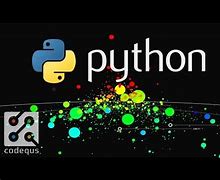Let's get started with data science in Python by first understanding data science. Data science is all about finding and exploring data in the real world and using this knowledge to solve business problems. Some examples of data science include Customer prediction (A system can be trained on customer behaviour patterns to predict the likelihood that a customer will purchase a product)
and Service planning (Restaurants can predict how many customers will arrive on the weekend and plan their food inventory to meet demand).
Now that you know what data science is, and before we dive into the topic of data science with Python, let's talk about Python.
If you are curious and interested in venturing into the field of data science, then python is one essential tool that you will need as you launch your data career. Python is one of the most popular programming languages, used widely by many programmers owing to its diverse usage in Its usage in data science, the Internet of Things, artificial intelligence, and other technologies. It also has rich mathematical or statistical features.
Moreover, it's a really straightforward and beautiful language that encourages good coding practices. It is therefore highly advised for beginners. Since it combines data science tools and techniques with the expressive capability of a standard programming language, Python is particularly well-liked among data scientists.
There are a number of additional reasons, including:
Python is comparatively quicker than other programming languages in terms of speed.
Availability - There are numerous packages created by other users that are readily available and can be used.
Design objective: Python's syntax responsibilities are simple to comprehend and intuitive, making it easier to create applications with intelligible code.
Although there are other data science tools, such as mySQL and R, this post will concentrate on Python and how it may help with data science.
Python is a straightforward programming language to learn, and it supports certain fundamental operations like adding and printing statements. But, you must import particular libraries if you wish to undertake data analysis. Many instances include:
- Pandas is a tool for working with structured data.
- You may generate n-dimensional arrays with the aid of the robust library NumPy.
- SciPy - Offers scientific features like Fourier analysis and linear algebra
- Matplotlib: Mostly used for visualization.
- Scikit-learn is the program used for all machine learning operations.
There are additional libraries outside these as well, including:
- Networks & I graph
- BeautifulSoup
- OS
- TensorFlow



Top comments (0)